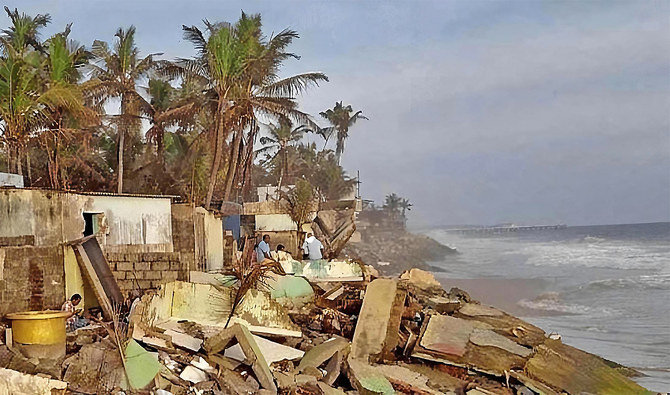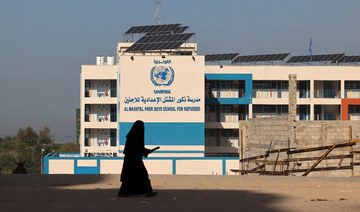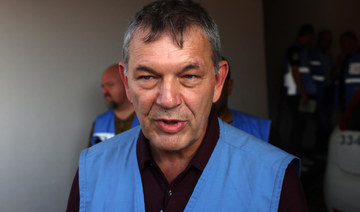NEW DELHI: When the sea destroyed her home, Mary Joseph had to move to a warehouse, a shelter that she and her children now share with more than 20 other families displaced by coastal erosion in Valiyathura, a former port area of Trivandrum, the capital of India’s southern Kerala state.
The rising sea levels in the state that spans almost 600 kilometers on the southwestern coast of the Indian subcontinent is one of the reasons that people are losing their houses and livelihoods, but climate change is not the only culprit.
In Trivandrum, more than 20 percent of the city’s Arabian Sea coastline is affected by erosion, much of it caused by artificial seawalls and riprap revetments protecting infrastructure projects, according to local government data.
Hundreds of fishing families from Valiyathura and about a dozen other neighboring villages have been forced to abandon their houses in the past few years.
“It’s terrible living here where you don’t have any privacy,” Joseph, who has two teenage children, told Arab News.
“Life in the warehouse has not only dehumanized us, but has also brought health problems, with many of us suffering from respiratory problems because this building used to store cement earlier.”
Since May, the displaced villagers and civil society groups have been protesting a multibillion-dollar seaport project built in nearby Vizhinjam, which they say has deprived local communities of homes by increasing sea levels at a pace much faster than climate change.
The Adani Vizhinjam port and container transshipment facility, developed in a public-private partnership since 2016, has already affected about 200,000 people and the number is increasing, according to Trivandrum-based environmentalist A. J. Vijayan.
“We have seen that every year at least 100 houses are getting lost after the port project started,” Vijayan told Arab News.
He estimates that more than 650 families have since moved to temporary shelters in nearby schools and warehouses.
Vijayan is one of the organizers of the protest to stop the development and compensate the fishermen who have lost their lands.
“For land and housing, they should be adequately compensated,” he said, adding that protesters also want the local government to restore the eroded coastline that provided livelihoods to those dependent on it.
“Stolen Shorelines,” a documentary film by K. A. SHajji, a journalist from Kerala, shows how development projects in Trivandrum are pushing coastal communities into homelessness and poverty.
“The coastal region of Kerala is facing massive sea erosion. Massive sea erosion is visible in Trivandrum and the surrounding areas for the last four and five years, and now it has escalated to alarming levels,” SHajji told Arab News.
“At one level climate change is a villain. On the other level there are many contributing factors that are aggravating the crisis created by climate change.”
The local government has policies to rehabilitate displaced communities.
“We are giving 10 lakhs rupees ($12,600) of which six lakhs is for buying land and four lakhs for building houses,” Sheeja Mary, deputy director of the Kerala Department of Fisheries, told Arab News. “These projects are for those who live within 50 meters of the high tide line and those affected by sea erosion.”
She said that under the program, the government has so far helped 3,000 people and plans to rehabilitate a further 15,000.
But the assistance covers all those displaced along the hundreds of kilometers-long Kerala coast, which means that only a fraction of the people affected will receive funding. And if they do, it may be too little to rebuild their households and livelihoods.
Reni Dixon, another resident of the Valiyathura warehouse, said that with the government assistance she would fail to buy land in any port city of Kerala, where her family could rely for sustenance on what they know best — fishing.
“If we shift to the rural areas then our livelihood is lost,” she added. “We have lost not only our houses, but also our livelihoods, and the government is not willing to accept that this is a problem.”






















